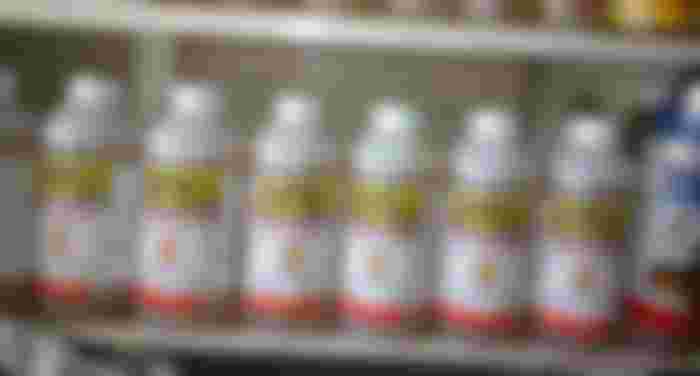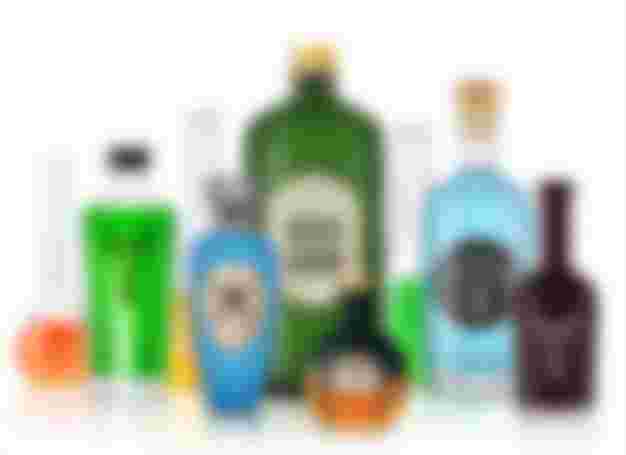Howdy folks, how was your Sunday? Mine was very quiet and boring, and that's because most of my classmates aren't around. We are still battling with electricity and water supply issues over here, I had to go out to get water from another house which I used to take my bath, do laundry and cook.
I didn't actually know what topic to write on today but luckily while I was interacting on some articles earlier today, I came across something on FarmGirl article and it gave me an idea.

You know, they aren't wrong with the above statement, there's a certain level something has to get to before it can kill you and how do I come to know this? Because I have heard of someone that tried to commit suicide by using a poisonous substance but she didn't die, because she didn't take enough of it.
The poison I am talking about is something popular in my country, it's called sniper and it's specifically meant for killing pests (cockroaches, ticks, weevils, and ironically; humans). But these days, it is no longer the go-to pesticide for taking care of pests, it's now the favorite cocktail of suicidal victims.

The funny thing with sniper is that it doesn't kill instantly as most people thought. They think they just have to drink it and immediately it's lights out, but it's far from that, it kills slowly and it might take up to an hour before the person dies.
Within minutes of taking sniper, the person starts experiencing severe pains and burning, the substance starts slowly burning vital organs from the inside and the person will suffer through that pain until they eventually die.
Seeing the way sniper kills, it's certainly a very dangerous substance but it has a lethal dose; the point where it can kill. Taking a small amount of sniper won't kill you, but how small is small? (Please don't try to find out 😆). Let me shock you a bit; many of us have unknowingly taken sniper at one point or the other, and how do I know? Because it's used to preserve beans!
Some farmers use sniper to preserve beans so that weevils don't get into them, this is the same beans we end up cooking. That's why it's recommended to parboil beans first, completely drain the water and then add clean water to reduce the amount of sniper in it.
But some persons don't even parboil their beans, they just cook it straight up till it's ready to be eaten, and while the amount of sniper at that point is too small to cause any immediate effect, it does accumulate in the body and will certainly lead to a problem in the future.
Back to the little thing I said from the start about a girl not dying after ingesting sniper, her roommate found her wriggling in pain with a bottle of sniper close to her and she was quickly rushed to the hospital. The doctors in the hospital were able to flush out the substance from her system and they said she was very lucky because she didn't take a lethal amount of the substance.
Do you know that water can be toxic? I came across it while researching about toxicity and poisons earlier today, but am I surprised by that piece of info? Of course not. It got me wondering, what then isn't toxic? According to the grandfather of toxicology, Paracelsus, "everything is poisonous or not, according to the dose"

What this means is that everything has a lethal level; it doesn't kill you because you're taking in just the right amount but if you go above the threshold, well, you know the rest. This brings us back to the popular saying; "too much of everything is bad", and yes, too much water can kill you.
The lethal dose of a substance is calculated according to the weight of an individual, this simply means that something that might be lethal for Peter might not kill Paul. Take for example, water has a lethal dose of 6 liters for a person weighing around 165 pounds, but a person weighing around 200 pounds might be able to drink that amount and still live.
I have been using sniper as an example but lethal dose is also seen in cyanide but this one is very tricky because a very small dose of cyanide can cause instant death. Unlike water that needs about 6 liters to kill a 165 pounds human, a smaller dose of cyanide can lead to instant death because it directly attacks the enzymes that process oxygen in the body.

But do you know that this same cyanide is present in some of our food items? Food items such as lettuce, sweet potatoes, maize, almond, cassava, and kidney beans contain a very small amount of cyanide but the body can handle such small amounts, it's when it gets to a certain level (about 50 to 200mg) then you will know you're in trouble, but that is very unlikely unless you're planning on eating raw cassava roots 😆
Conclusion
Toxic substances are all around us and we sometimes mistakenly ingest them but we are usually safe from them because of the little amount we take into our body, but it's still much better to stay away from all known toxic substances.
As the grandfather of toxicology has said, everything is poisonous or not, it all depends on the dose, but how will you know the lethal dose? It's better not to find out and just stay safe 😉
Thanks for reading
Sunday January 16, 2022




everything is poisonous or not, it all depends on the dose, but how will you know the lethal dose? Basically everything we know is poisonous